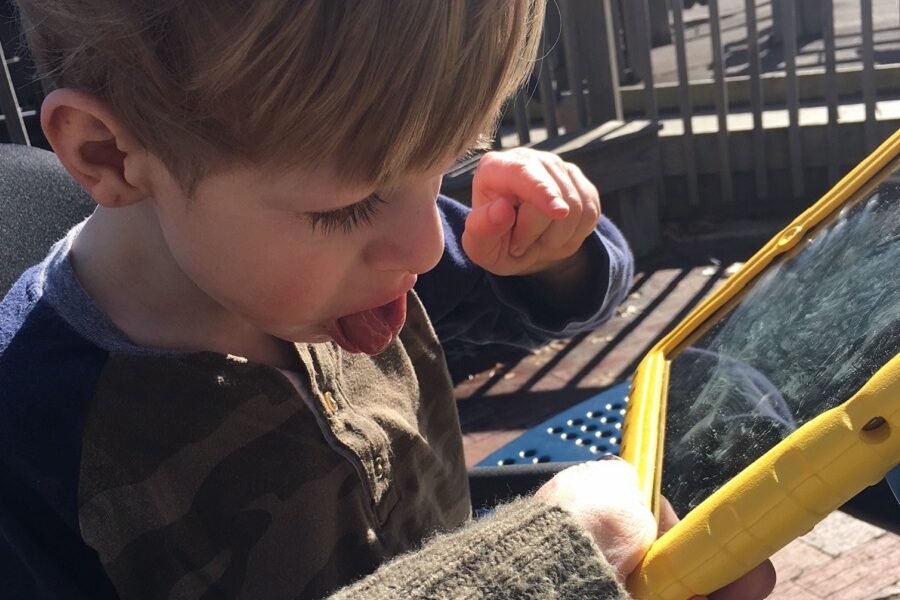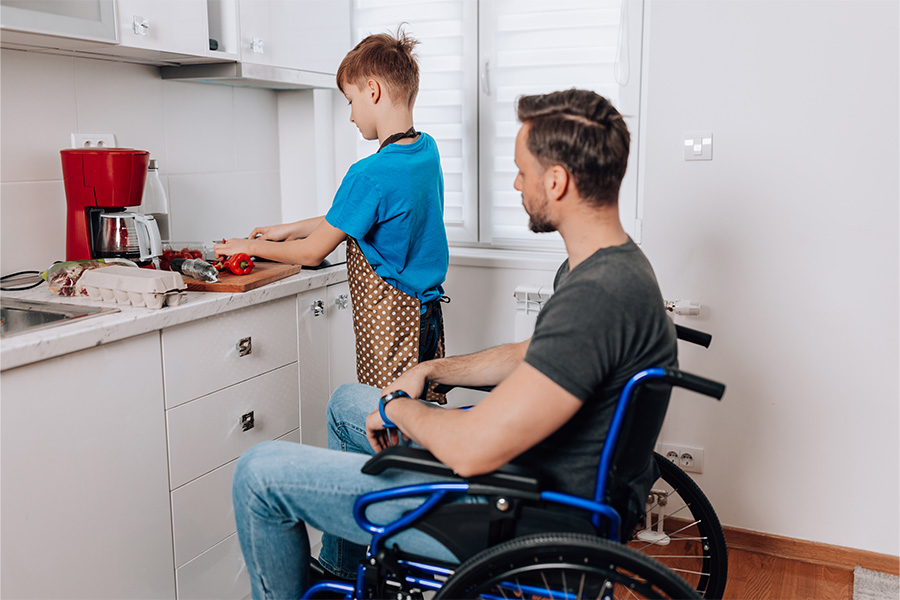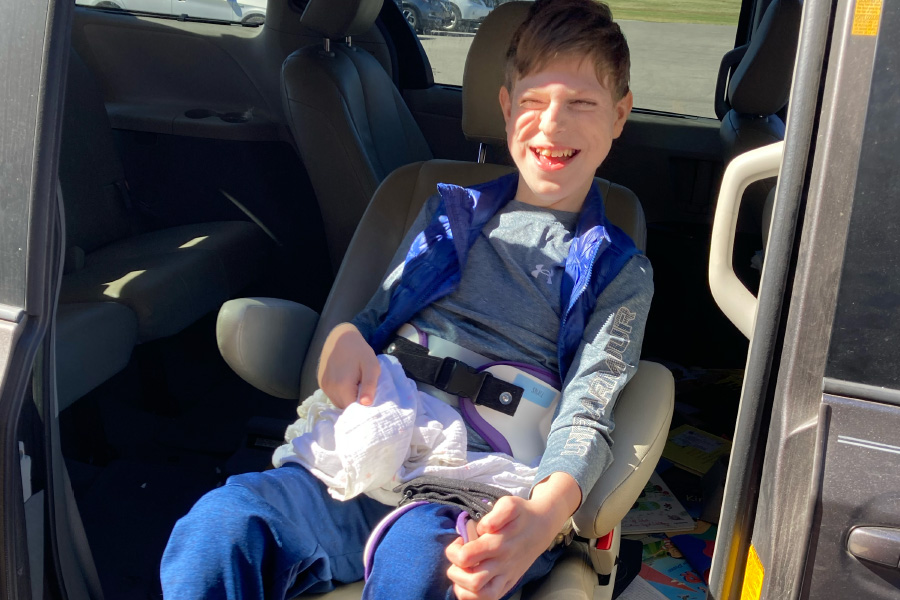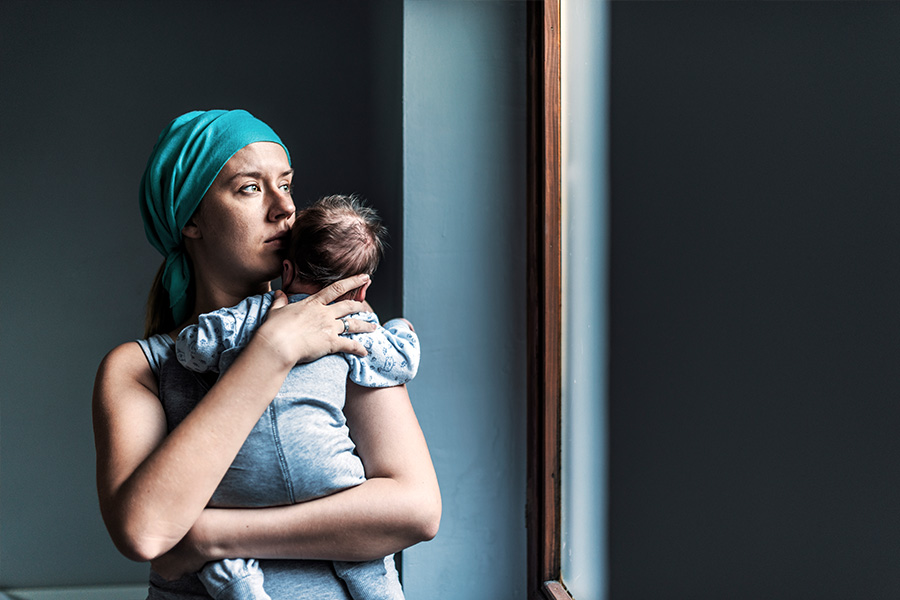Here’s What a Sensory Processing Disorder Really Looks Like
Nails on a chalkboard is a cliché for a reason. Everyone can imagine the drawn out screeeeeeeek that triggers the involuntary shiver. Here’s another: close your eyes and imagine a knife scraping across a dinner plate. Think of that mind-crunching sound.
For my son, the world is his dinner plate.
We spend most of our time dodging noise.
But noise isn’t the only sensitivity for kids with sensory processing disorders. For some, it’s the feel of certain fabrics on the skin. For others, it’s the texture of food or the brightness of light or the tightness of hugs or the feel of bare feet on the ground or being jostled in a crowd. It can be anything really. As long as it sends the senses into overdrive, it’s a sensory hot spot. But it can be a moving target, which is probably why there wasn’t an official diagnosis for it until occupational therapist, Dr. Jean Ayres, first coined the term in the 1970s.
My child’s sensitivity didn’t show itself at first. Unlike his cerebral palsy, which requires a wheelchair, this is not the kind of thing that stands out. But his doctors, both the geneticists who followed his particular syndrome and the NICU doctors who diagnosed his cerebral palsy, warned us it could be a possibility. It wasn’t until later, in one of his follow-up visits to the developmental clinic, when I was describing his reactions to certain noises that they gave it a name—sensory processing disorder.
It started with the vacuum. He was eight months old and we were trying the solid food thing, some sort of ridiculously crumbling Gerber cracker. Ninety percent of it landed on the floor. And because the dog was otherwise occupied in the yard, I had to clean it up myself. I grabbed the vacuum without thinking. Why would I not? But as the suction hit full blast, my son did that frozen scream face. You know the one I’m talking about—the Charlie Chaplin frozen mask of terror that precedes an epic crying jag. I didn’t know what was wrong. Had he choked on a cracker? I shut off the vacuum. Big fat tears dropped onto his tray. And then he settled back down. Weird, I thought and picked up the vacuum. It only took once more for me to connect cause to effect. He was terrified of the noise, more terrified than I’d ever seen him before.
This was the beginning of the list, the list of sounds he could not tolerate.
To it, I soon added the pneumatic tube at the bank, the one you use to make deposits. It seemed so family friendly, always waiting empty with a lollipop for the kids. But it was just as bad as the vacuum. I watched him dissolve into hiccupping tears in the rearview mirror while our money was whisked away. We stopped making family trips to the bank.
The hairdryer came next when I took him for his first “official” haircut. I’ve never felt sorrier for the woman at Great Clips whose hands shook each time he cried out. Later, when he turned four, she became our renegade stylist, rolling his wheelchair outside for an al fresco haircut in the summer sun. It was the best haircut he ever had. But they are few and far between, which is why he continues to look like a dandelion gone to seed.
Most of us naturally filter various stimuli without a thought. We can feel the elastic around the waist of our jeans while we sip cold lemonade and the next table over erupts in laughter. But to those with sensory processing disorders, that’s about three sensory experiences too many. Where we shift gears seamlessly between touch and taste and sound, they get clogged up, caught in a traffic jam of senses. And it’s exhausting for them and their family.
But by now, I’m used to it. I’ve learned the patterns and the triggering situations.
And I try not to let it stop us from living. We still go to the park, even if it’s crowded and loud. He still does have to get a haircut every now and then and unless we decide to let the house fully return to nature, I do sometimes have to vacuum when he is present. One of the greatest repercussions for a child with a sensory disorder is the withdrawal from normal daily activities. It can make living out in the big wild world so hard. But we have to find a way to live with it so that it does not become the dictator of our lives.
There are ways to cope. Because he responds positively to certain sounds, we use those to counteract the negative ones. We keep YouTube videos at the ready on his iPad. If the place doesn’t have Wi-Fi, forget about it. Favorite toys or foods that can provide distraction are excellent backups. Necessity breeds creativity. And sound dampeners like headphones are great for going somewhere where you just can’t escape the noise. They keep him calm and let him carry on.
The point is, there is always a workaround. It doesn’t have to be all or nothing, out in the chaos or barricaded in the house. Once you learn your child’s sensitivities you can be both protector and traffic guide through a less jarring life.

Jamie Sumner is a special needs mom, author and blogger.
Read her blog, The Mom Gene.
Follow her on Facebook.
More Articles Related to Sensory Processing Disorder:
Resources for Sensory Processing Disorder:
STAR Institute for Sensory Processing Disorder















